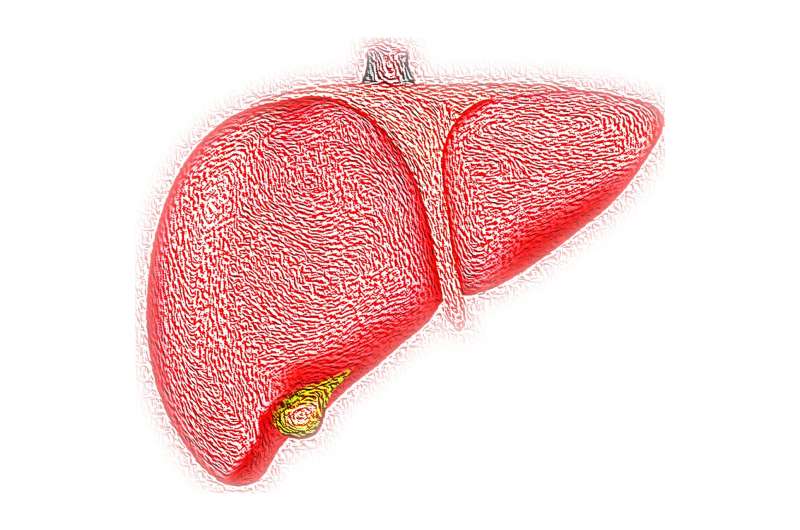
Liver disease is consistently associated with heavy alcohol consumption, but studies of non-heavy alcohol use on liver health are often contradictory, both within the general population and among those known to have non-alcoholic fatty liver disease (NAFLD) and at-risk individuals.
While evidence suggests that the pattern of alcohol consumption may be an important predictor of its health effects, alcohol research frequently focuses on average daily or weekly alcohol consumption, possibly obscuring differences in drinking patterns such as drinking frequency, the usual quantity of alcohol consumed and binge drinking behavior.
Now, researchers from Boston University Chobanian & Avedisian School of Medicine show that non-heavy alcohol use is associated with fibrosis (thickening and scarring of connective tissue) and at-risk nonalcoholic steatohepatitis (NASH). They also found that several alcohol use patterns and measures, including total weekly alcohol consumption, were associated with clinically significant fibrosis and at-risk NASH among non-heavy alcohol users.
“Our results reinforce the importance of encouraging all patients to reduce alcohol intake as much as possible and to at least adhere to current U.S. Dietary Guidelines recommended limits,” explains corresponding author Michelle T. Long MD, MSc, associate professor of medicine.
More than 2,600 participants from the Framingham Heart Study were administered a clinician-directed questionnaire regarding their alcohol use and offered a vibration-controlled transient elastography (VCTE) to measure their liver for excessive connective tissue build up. Not only did the researchers find that non-heavy alcohol use was associated with fibrosis and NASH, but also that multiple alcohol use patterns were responsible for this.
According to the researchers, these findings have significant implications for counseling patients with and without pre-existing NAFLD, especially as current American Association for the Study of Liver Diseases guidelines do not make any recommendations regarding non-heavy alcohol use in NAFLD.
“In addition, our finding that multiple alcohol use patterns associated with increased fibrosis and/or at-risk NASH merits further investigation into the importance of how patients use alcohol beyond simply quantifying the total amount of consumption,” adds Long, a physician at Boston Medical Center.
These findings appear online in the journal Clinical Gastroenterology and Hepatology.
More information:
Brooke A. Rice et al, Non-heavy alcohol use associates with liver fibrosis and ‘nonalcoholic’ steatohepatitis in the Framingham Heart Study, Clinical Gastroenterology and Hepatology (2022). DOI: 10.1016/j.cgh.2022.10.039
Journal information:
Clinical Gastroenterology and Hepatology
Source: Read Full Article
